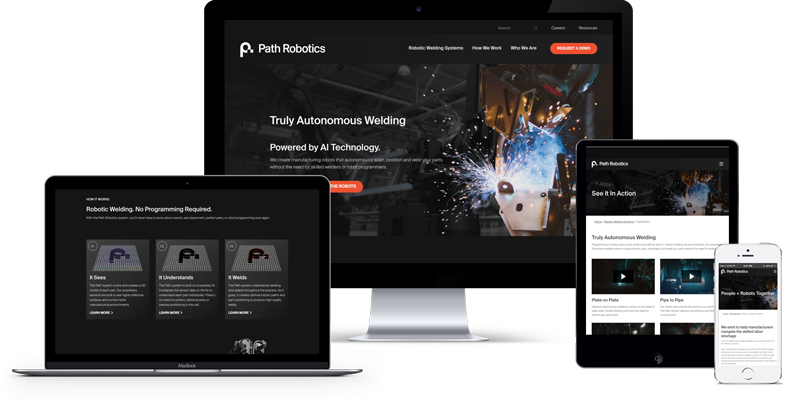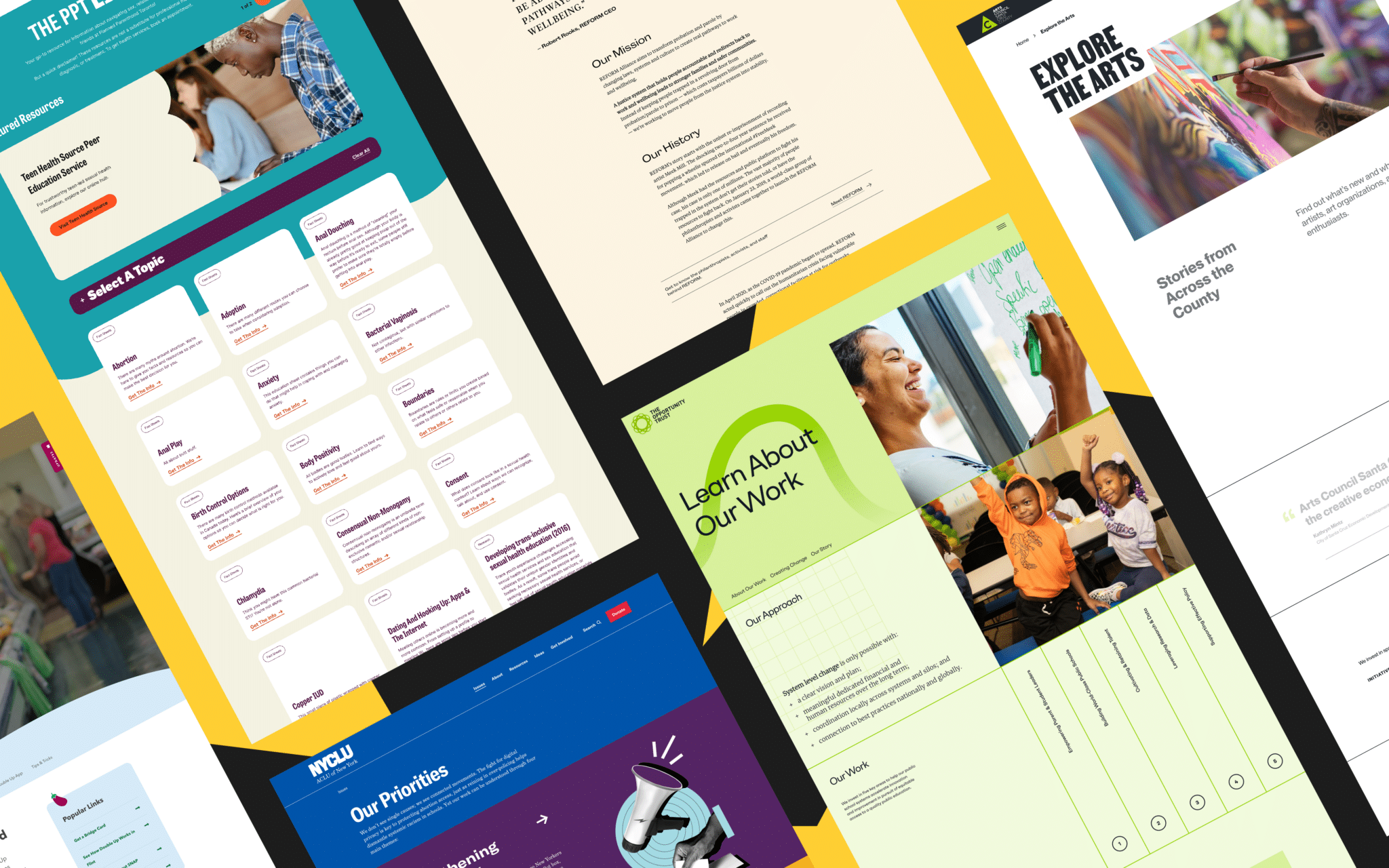Website Design for E-commerce: Best Practices for a Seamless Shopping Experience
Website Design for E-commerce: Best Practices for a Seamless Shopping Experience
Blog Article
Modern Internet Site Style That Captures Focus and Transforms
In a progressively digital landscape, modern-day site design has actually become a pivotal factor in recording individual focus and driving conversions. By tactically employing aesthetic pecking order, receptive designs, and involving interactive components, designers can produce experiences that not just attract site visitors but additionally assist in meaningful communications. Furthermore, reliable call-to-action techniques play an essential duty in guiding individuals towards preferred end results. As we explore these crucial elements, it becomes clear that comprehending their interaction can substantially affect a site's efficiency and individual complete satisfaction. What are the key aspects that absolutely make a difference?
Value of Visual Power Structure
Aesthetic pecking order is a vital component in site design, as it overviews users' attention and boosts their overall experience. By strategically organizing material, designers can guide users to the most important details initially, thus raising interaction and boosting functionality.
Including a rational circulation in web content plan is essential; as an example, positioning the most essential information at the top of a web page fosters instant recognition. Consistent use of typography, such as varying font dimensions and styles, assists develop a clear material framework. This organization not just help in navigation yet additionally constructs count on, as users really feel extra comfortable when they can conveniently locate what they are trying to find.
Inevitably, a well-executed aesthetic pecking order not only improves aesthetic charm yet additionally considerably affects individual habits. By focusing on essential aspects and making certain a smooth experience, designers can properly transform visitors right into customers, enhancing the importance of this foundational style concept in contemporary internet site advancement.
Responsive Layout for All Gadgets
Creating a seamless experience across numerous gadgets is essential in today's electronic landscape, where customers gain access to web sites from smartphones, desktops, and tablet computers alike. Responsive layout is an essential method that ensures websites adjust fluidly to various display dimensions, alignments, and resolutions. By employing versatile grids, photos, and CSS media questions, developers can develop designs that preserve visual integrity and performance, despite the gadget being utilized.
The significance of responsive layout expands past appearances; it directly impacts individual engagement and conversion prices. A site that operates well on all gadgets encourages longer brows through and minimizes bounce rates, as customers are much more most likely to communicate with content that is very easy to navigate. Search engines, specifically Google, prioritize mobile-friendly websites in their positions, making receptive style a vital component of search engine optimization (SEARCH ENGINE OPTIMIZATION)
Including receptive design not just boosts user experience but additionally improves the growth procedure. By producing a solitary website that functions across tools, businesses can conserve time and resources contrasted to creating different mobile and desktop variations. Eventually, responsive layout is a basic strategy for contemporary internet site design, making sure ease of access and fulfillment for all individuals, no matter of their gadget.
Involving Interactive Elements
While a responsive style lays the groundwork for a functional internet site, incorporating interesting interactive aspects is important for catching customer attention and cultivating much deeper links. Website Design. Interactive elements, such as computer animations, quizzes, and clickable infographics, develop an extra dynamic user experience, urging visitors to spend more time on the site
Incorporating interactive functions can also guide customers via facility info, making it easier to absorb content. Interactive sliders can show product variants, while ingrained videos can provide demos or testimonials that reverberate even more than static photos or message. Gamification strategies, like rewards for finishing tasks or engaging with material, can enhance individual motivation and retention.
Reliable usage of interactive elements not just improves the customer experience yet can likewise lead to greater conversion prices. It is essential to balance interactivity with efficiency; extremely intricate features might impede site rate, adversely influencing individual fulfillment.
Structured Navigation Practices
Efficient navigation is a keystone of any kind of effective site, as it straight influences user experience and web content ease of access. Structured navigating techniques guarantee that customers can conveniently situate details, boosting their communication with the website. A well-structured navigating menu should be simple and intuitive, normally featuring a limited variety of main classifications to stay clear of frustrating visitors.
To attain structured navigating, designers must prioritize an ordered framework that realistically arranges material. Executing breadcrumb trails can supply customers with context concerning their current place within the website, enabling for smooth backtracking. Furthermore, using drop-down menus can successfully save room while still offering accessibility to subcategories.
Receptive layout is crucial, as navigation must be useful across all tools (Website Design). Mobile individuals, in specific, benefit from touch-friendly menus and collapsible areas that about his preserve usability without compromising looks

Efficient Call-to-Action Methods
A well-crafted call-to-action (CTA) is essential for guiding users towards preferred end results on a site, as it urges them to engage with web content or make a purchase. To optimize their efficiency, CTAs should be clear, compelling, and purposefully positioned throughout the site.
First, use action-oriented language that interacts seriousness or value, such as "Get Started," "Sign up with Now," or "Insurance claim Your Price cut." This language not only inspires customers however additionally sets clear expectations concerning the next actions.
Second, consider style aspects; CTAs need to stand out aesthetically with contrasting colors, ample whitespace, and popular positioning. A switch that is simple to see and click rises the possibility of user interaction.
In addition, personalizing CTAs based on customer behavior or demographics can substantially boost engagement. Customized messages resonate much more with individuals, driving greater conversion rates.

Conclusion
To conclude, contemporary website design highlights the assimilation of aesthetic hierarchy, receptive formats, engaging interactive aspects, structured navigation, and reliable call-to-action methods. These components jointly enhance individual experience, making certain that site visitors remain engaged and inspired to check out material additionally. By focusing on these layout concepts, companies can dramatically improve user retention and conversion rates, eventually resulting in higher success in the electronic landscape. The continual evolution of internet layout underscores its important duty in effective on-line communication and marketing.
In a progressively electronic landscape, modern website design has emerged as an essential factor in recording user focus and driving conversions.Visual power structure is a crucial aspect in site layout, as it guides users' attention and improves their overall experience.The importance of receptive design extends beyond aesthetics; it directly impacts individual engagement and conversion prices.Including receptive design not only enhances customer experience however also enhances the advancement process. Inevitably, receptive design is an essential strategy for official website modern-day website style, ensuring availability and complete satisfaction for all customers, regardless of their gadget.
Report this page